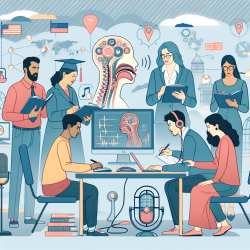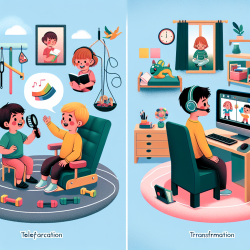Introduction
In the field of speech-language pathology, especially when providing online therapy services to schools, understanding and implementing reflexive practice can significantly enhance the quality of care provided to Indigenous populations. A recent systematic critical synthesis titled "Reflexive Practice as an Approach to Improve Healthcare Delivery for Indigenous Peoples" offers insights into how reflexivity can be incorporated into cultural safety education to improve healthcare outcomes for Indigenous peoples.
Understanding Reflexive Practice
Reflexive practice involves a deep awareness and examination of one's own cultural identity, beliefs, and biases. In the context of healthcare, it means understanding how these factors influence interactions with patients from different cultural backgrounds. The study highlights the need for healthcare professionals to engage in reflexivity to provide culturally safe care, which is respectful and non-discriminatory.
Key Findings from the Research
The research identifies several key findings:
- Conceptual Clarity: There is a lack of consistency in how reflexivity is defined and taught within cultural safety curricula. This highlights the need for clear definitions and frameworks to guide educational interventions.
- Pedagogical Approaches: Reflexive catalysts, such as objects, people, and Indigenous pedagogies, are used to facilitate reflexivity. These methods aim to challenge students' existing knowledge and beliefs, promoting a deeper understanding of cultural diversity.
- Assessment Methods: Current assessment methods focus more on changes in knowledge and attitudes rather than the ability to engage in reflexivity. There is a need to develop assessments that evaluate the reflexive process itself.
Implementing Reflexive Practice in Online Therapy
For practitioners providing online therapy services, integrating reflexive practice can be transformative. Here are some steps to consider:
- Engage in Self-Reflection: Regularly reflect on your own cultural identity and biases. Consider how these may impact your interactions with clients from diverse backgrounds.
- Incorporate Indigenous Pedagogies: Use Indigenous stories, art, and cultural practices as tools to facilitate learning and understanding in your sessions.
- Develop Assessment Tools: Work on creating assessment tools that focus on the reflexive process, ensuring that both you and your clients are engaging in meaningful reflection and growth.
Encouraging Further Research
While the current research provides valuable insights, it also highlights areas where further exploration is needed. Practitioners are encouraged to delve deeper into the literature on reflexive practice and cultural safety, contributing to the development of more effective educational interventions.
To read the original research paper, please follow this link: Reflexive Practice as an Approach to Improve Healthcare Delivery for Indigenous Peoples: A Systematic Critical Synthesis and Exploration of the Cultural Safety Education Literature.










